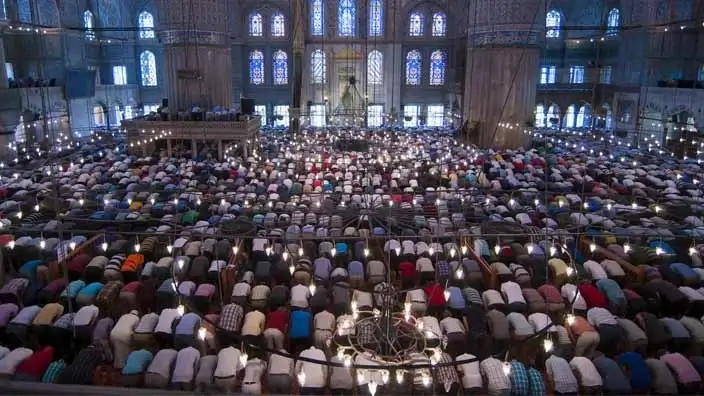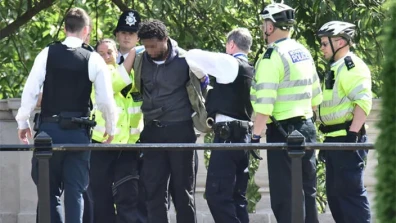Although Taraweeh is not an obligatory prayer but it is highly recommended sunnah in the religion of Islam.
Considering it an essential part to get closeness to the Allah swt; Muslims have been asking how to pray taraweeh; whether it is voluntary prayer or Sunnah; how many rakaats to be performed, whether it is to be performed individually or in mosque with jamat?
In this article, we have made a step guide all the related questions about the significance of tarawih prayers at night followed by complete step wise method to perform tarawih.
Table of Contents
- Significance of Prayer in Islam
- Is Taraweeh Sunnat or Voluntary Prayer?
- History of Taraweeh Prayer
- Difference between Qiyam al Layl, Tahajjud, Witr prayer and Taraweeh
- Time of Taraweeh Prayer
- How Many Rak'at in Taraweeh?
- Taraweeh can be performed at home or mosque?
- How to Pray Tarawih Prayer Step by Step?
- Conclusion
- Frequently Asked Questions
Significance of Prayer in Islam
Offering prayer (Salah) is the first and foremost duty of Muslim men and women, without which one cannot be considered a perfect Muslim, and the Holy Prophet (SAW) has said about prayers that it is a pillar of Islam.
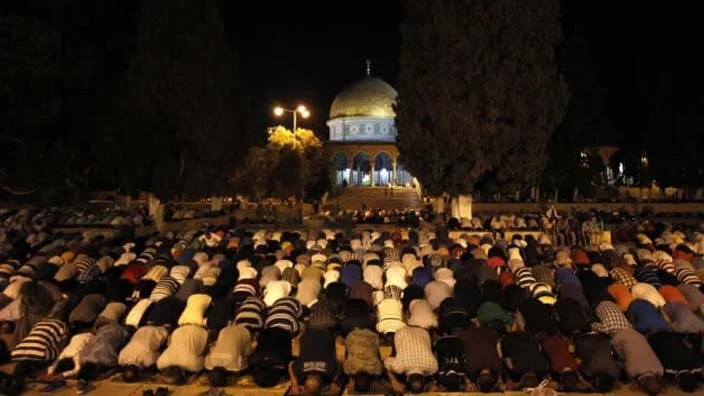
One of the most significant practices of Islam praying tarawih is the significant practices and other night prayers are the sources of forgiveness of past sins and earning reward with good deeds.
Muslim men and women offer prayer five times a day, one important thing to note is one can offer neither a prayer in other time of prayer nor all the prayers on one time. However, every prayer has its own specific time.
Broadly, prayers are categorized into four types: obligatory prayer, Wajib, Sunnah prayer, and optional prayer. Taraweeh prayer is also a type of night prayer and it comes under the category of optional prayer or voluntary prayer.
it's especially associated with the holy month throughout Ramadan, in which Muslims throughout the world do fasting during, earning reward all the days of Ramadan and pray tarawih prayer every night throughout Ramadan.
Is Taraweeh Sunnat or Voluntary Prayer?
There is a difference of opinion among the scholars that whether Taraweeh prayer is a Sunnat or voluntary prayer. Some say that it is Sunnah prayer while others consider it voluntary prayer prayed every night throughout Ramadan.
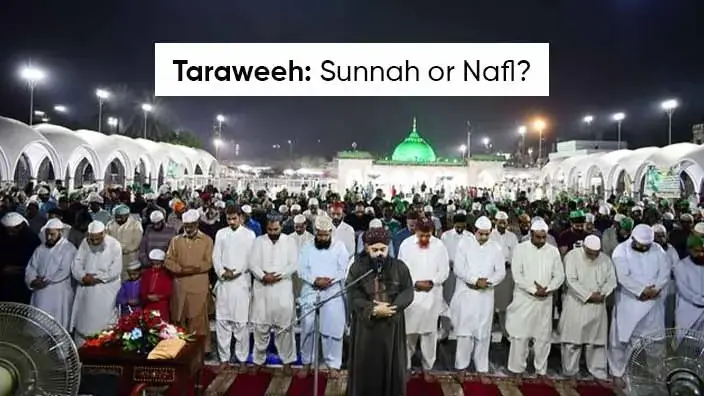
However, it is specifically associated with the holy month of Ramadan, and the literal meaning of the word ‘Taraweeh’ means “to rest and relax” which refers to the way Sahabas used to take a short break after every four rakaats.
The short break is taken after reciting lengthy Surah of Quran in every rakat of Taraweeh out of devotion, making each rakaat lengthy.
Related Article: How to pray istikhara
History of Taraweeh Prayer
Basically, Taraweeh prayer is an extension of Tahajjud prayer, or you can say that it is deeply associated or connected with Tahajjud prayer which is optional prayer as well. People commonly pray after last prayer of the night.
Scholars say that Qiym-al-Lail, Tahajjud and Taraveeh are three different names for the same night prayers.
All of the three were performed at last third part of night by the Prophet Muhammad saw but tarawih prayer every night throughout Ramadan. Here arises the question that what is the difference between them?
Difference between Qiyam al Layl, Tahajjud, Witr prayer and Taraweeh
Qiyam al Layl and Tahajjud:
Basically, Tahajjud was obligatory for the Holy Prophet SAW besides the five daily prayers (Salah), and those five are farz for all the Muslims and he (SAW) used to pray taraweeh at his Hujrah (home near Masjid e Nabvi).
Narrations state that ALLAH swt has ordered it in Surah al Muzzamil of the holy Quran, here the Arabic word: -
‘یٰۤاَیُّهَا الْمُزَّمِّلُۙ(۱) قُمِ الَّیْلَ’
“O you who wraps himself (Prophet Muhammad). Stand up (for prayer) during the night.”
ALLAH swt has further stated: -
‘وَ مِنَ الَّیْلِ فَتَهَجَّدْ بِهٖ’
“And offer Tahajjud in some part of the night”.
It can be noted here that in the above words of the Quran, the words ‘Qiyam al Layl’ and ‘Tahajjud’ has been used interchangeably for the same night prayer, which he (SAW) used to perform at late night.
The Revered and Renowned Rasool (SAW ) said: ‘ثَلٰثٌ ھُنَّ عَلَیَّ فَرِیْضَةٌ وَھُوَ لَکُمْ سُنَّةٌ’, i.e. there are three things which are Fard for me and which are Sunnah for you. (One of those things is) ‘قِیَامُ اللَّیْل’ “means offering Salah during the night”. (Al-Mu’jam-ul-Awsat, vol. 2, pp. 274, Hadees 3266).
In the above Hadith one important thing to note is the word ‘Qayam-ul-Lail’ also refers to Tahajjud prayer performed. So, it is clarified that the two words are used interchangeably.
Is Witr Prayer same as Tahajjud or Taraweeh?
Witr is of odd number, three rakaats Wajib or required, that we offer after the obligatory Isha prayer, evening prayer or last prayer of the day also emanated from Qayam-ul-Lail or Tahajjud.
The Companions of Holy Prophet (sawi), who were unable to offer Tahajjud, came to him and asked the Prophet PBUH that they wish but cannot wake up from sleep during night out of tiredness.
The Prophet PBUH said that it would be better for you people to offer Witr prayer just after the Isha, last prayer.
Practicing it as a highly recommended sunnah, people who cannot pray Tahajjud opt to pray Witr prayer just after the obligatory Isha prayer, evening prayer.
Narrations state in a sahih bukhari hadith, the prophet (PBUH) said: -
The witr is a duty for every Muslim (al bukhari).
The Messenger of ALLAH (PBUH) said: “whoever fears that he will not get up at the end of the night, let him pray witr at the beginning of the night, but whoever thinks that he will be able to get up at the end of the night, let him pray witr at the end of the night, for prayer at the end of the night is witnessed (by the angels) and that is better.” (narrated by muslim, 755)
Association of Tarawih Prayers with Tahajjud or Qiyam-ul-Lail
As already mentioned that Qayam-ul-Lail, Tahajjud and Witr prayer are the terms used interchangeably. They are offered at the one third time, at two thirds of night if fear dawn or last part of the night throughout the year.
Tahajjud or Qayam-ul-Lail, an optional prayer, was shifted to be prayed after Isha that is last prayer of the day for the ease of the companions of prophet Muhammad (SAW).
However, Taraweeh prayer is a night prayer which is specifically associated only with the blessed month of Ramadan and not offered in any of the other months except Ramadan. Though it was offered by the Holy Prophet (SAW) at the same time of the night as Qayam-ul-Lail or Tahajjud.
As prophet Muhammad (SAW) used to offer late night prayer at his home, it was once in the blessed month of Ramadan -- last Ramadan of the life of the Holy Prophet(SAW)-- that he (SAW) came out of his Hujrah to Masjid e Nabvi and offered eight rakaats of Qayam-ul-Lail as usually he (SAW) used to pray at home.
The companions the Holy Prophet (SAW), who were also in the mosque, joined him (SAW) as well and offered Qayam-ul-Lail in his (saw) Imamat. It was done for the three consecutive nights.
The next night, the Sahabas waited for Prophet Muhammad (SAW), but he didn’t come. The next morning, he (SAW) told his companions “ nothing prevented me from coming out to you except the fact that I feared that it would be made obligatory for you”. (Sahi Muslim).
And after that, people began to pray Traweeh at their homes and in the mosques as well.
It is proved here that Taraweeh prayer, Tahajjud or Qayam-ul-Lail was Farz (obligatory) was obligatory for the holy Prophet (SAW) but not for other Muslims.
Also, Prophet Muhammad (SAW) performed congregational tarawih prayers at night for consecutive nights with sahabas which proves that it is a Sunnah, one of the most significant practices.
Time of Taraweeh Prayer
Sahabas began to follow the Sunnah of praying Traweeh but at the time of Tahajjud and there is no reference or evidence of their performing it congregationally at mosques or their homes after Isha prayer during the life of the Holy Prophet (SAW) or during the Caliphate of Hazrat Abu Bakr (RA).
It was during the Caliphate of Hazrat Umar Farooq (RA), when he (RA) entered Masjid e Nabvi during Ramadan and noticed that people were praying Traweeh in many groups congregationally in various parts of the mosque.
It was for the convenience of the people, so that everyone may attend especially the laborers who couldn’t wake up late night, that he directed them to perform 20 rakaats of tarawih prayer after an imam, eventually the beginning of nightly congregational prayer.
How Many Rak'at in Taraweeh?
As far as the rakaats in Taraweeh prayer are concerned, there is a difference of opinion among the all four schools of thought, especially between schools of thought Ehl-Hadees and Ehl-Sunnah. Ahl-Tashi, on the other hand don’t pray Taraweeh.
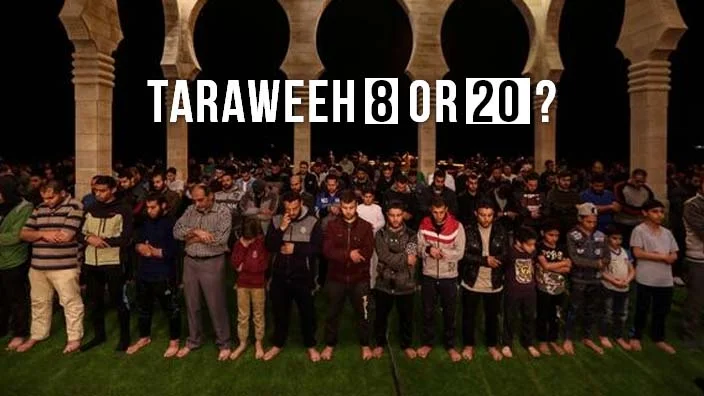
A). Number of Rakaats According Ehl-Sunnah
All four schools of thought support the number of rakaats of complete tarawih set up by the caliph Umar (RA) that 20 rakaats of Taraweeh prayer be performed.

B). Number of Rakaats According to Ehl-Hadees
Ehl-Hadees school of thought support Hazrat Umar’s tradition of 20 rakaats of Tarawih prayers was just an executive order for the time being and not to be acted upon forever.
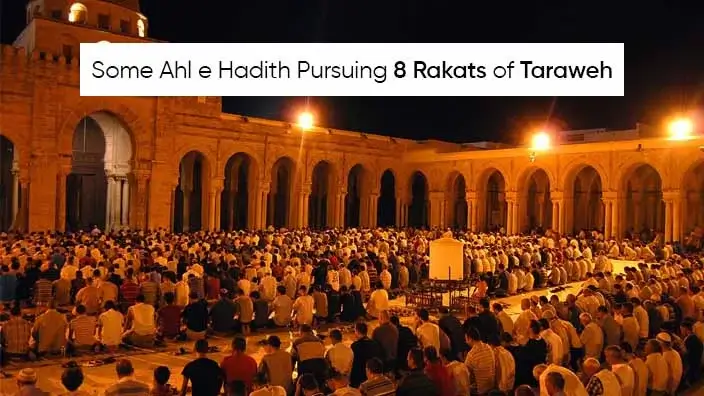
Thus ehl e hadees school of thought support earning reward with 8 rakaats of Taraweeh prayer that were offered by the bless Muhammad (SAW) during the three consecutive nights of Ramadan in Masjid e Nabvi.
Taraweeh can be performed at home or mosque?
It was in the Caliphate of Hazrat Umar (RA) that Tarawih prayers were began to be performed after Isha nightly congregational prayer.
It is better to offer complete tarawih congregational prayer, whether prayer at home or mosque to get the more rewards.
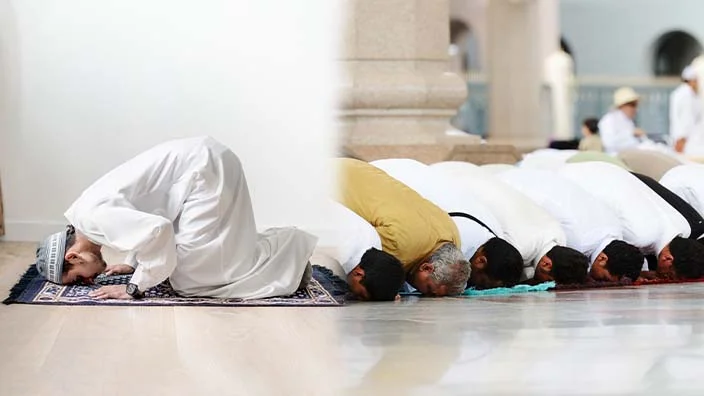
Complete tarawih can also be offered individually at home, but if you haven’t learnt the holy Quran by heart, it is preferred for you to offer it after an Imam where much of the Quran is recited so that may ALLAH reward us the high degrees and our past sins pardoned.
How to Pray Tarawih Prayer Step by Step?
Here is an explanation steps mentioned for how to worship ALLAH saw, the step guide of prayer Tarawih prayers: -
- Do not start praying without ablution (wudu), which is necessary for every Salah. Wear neat and clean clothes, the clothes that cover your satr (the private parts of your body). For males it’s from navel to knees, while for women, all the body needs to be covered except hands and face.
- Next thing is a clean place for praying Tarawih, which is mosque. If you are performing Tarawih prayers at home, find a clean place and spread the prayer-mate. Then, make sure that you are facing qibla. If you cannot pray Taraweeh while standing due to some reason, you are allowed to perform taraweeh prayer while sitting.
- Pray Taraweeh after Isha and before the Fajar time begins. Then, start praying with the intention to pray Tarawih by uttering it verbally in any language whether Arabic or your own. “I intend to offer two rakaats of Tarawih prayer for Allah, facing Ka’aba.
- Lift your hand touching the earlobes or up to your shoulders facing your palms to qibla and say ‘Allahu Akbar’, ALLAH swt is the greatest.
- Then place your hands below your navel in a position that your right hand is over your left one. Other women have to Place their hands on their chest.
- Praise ALLAH swt silently, ′SubhanaK-Allahumma wa bihamdiKa, wa tabaarak-asmuKa, wa ta-‘aala jadduKa, wa la ilaaha ghayruK’.
- Then recite Ta’awuz and Tasmiyah quietly, ′Auudhu bi-Llahi min ash-Shaitaanir rajeem bismi-Llahir Rahmaani Raheem’.
- After reciting ta’awuz and Tasmiya, if you are offering Tarawih prayers after Imam congregational tarawih prayers, you have to stay silent and listen to the Imam’s recitation Surah Al Fatihah and say ‘Amen’ when the Imam ends it.
- If you are offering Tarawee individually, recite Surah al Fatihah, and say ‘Ameen’ at its end.
- Then recite any other Surah after surah al fatihah, or listen to the Imam if it’s being offered congregationally. However, it is preferred to recite much of the Quran in praying Taraweeh for ALLAH swt happiness.
- Bend to your knees, placing your hands on your knees, and say ‘Allahu Akbar’, ALLAH swt is the greatest. Keep your back straight and stay for a while at this position. Then say ′Subhaana Rabbiy-al-Adheem’ three times at least. This part of Salah is called Ruku position.
- Then stand up fully back to the straight position again say, ‘Sami-Allahu liman hamidaH’, after Iman, you don’t need to say it. Then say these words whether praying congregational tarawih prayers or individually, ‘Rabbana laKal hamd’.
- Then again, say ‘Allahu Akbar’, ALLAH swt is the greatest and bow down to prostration, the position which is called Sujood.
- In prostration, say at least three times ‘Subhaana Rabbiy-al-Aalaa’.
- Sit up whilst saying ‘Allahu Akbar’ ,ALLAH swt is the greatest. Sit on your left foot bend under you, whilst keeping the toes of your right foot planted, pointing forward. Rest the palms of your hands on your knees in a position that your fingers are pointed towards the Qibla. other Women should sit in a position of leaning on their left hip, with the toes of both feet pointed to the right side.
- After a few moment, once your body in relaxed position, return back into prostration whilst saying ‘Allahu Akbar’, ALLAH swt is the greatest and repeat step 13.
- Stand up completely from the prostration whilst saying ′Allahu Akbar’. You have completed your first unit of prayer, the start praying second rak’at.
- Follow steps 8 to 15 again in the given order.
- Then sit in the position as described in step 14.
- While in sitting position, you have to recite the first part of the Tashaahud, ’At-tahiyyatu lillah, was-salawaatu wat-tayyibaat. As-salaamu ‘alayka ayyuhan-Nabiyyu wa rahmat-Ullahi wa barakaatu. As-salaamu alayna, wa alaa ibaadi-llahis saaliheen’.
- Then, while your hands rested on your knees, raise your right index finger and clasp the other fingers of your right hand meanwhile. Now, recite the second part of the Tashaahud, ‘Ashhadu an laa ilaaha ill-Allahu wa ashhadu anna Muhammadan abduHu wa Rasooluh’.
- Then, lower your right index finger, and keep other fingers in clasped position.
- Then, recite Durood Sharif while in sitting position in the previous position, ′Allah humma salli alaa Muhammadiw wa alaa aali Muhammadin, kamaa sallayta alaa Ibraheema wa alaa aali Ibraheema, innaKa Hameedum Majeed. Allahumma baarik ‘alaa Muhammadiw wa alaa aali Muhammadin, kamaa baarakta alaa Ibraheema wa alaa aali Ibraheema, innaKa Hameedum Majeed’.
- Followed by Durood Sharif, reciting some supplications for previous sins will be forgiven is highly encouraged. One of the very comprehensive among other supplications is, ‘Rabbana aatina fid-dunya hasanataw wa fil-aakhirati hasantaw wa qina adhaaban Naar’.
- Most important thing, realizing previous sins or past sins in supplication is must, sins will be forgiven after prayer or can surely assume that past sins pardoned if night prayer performed.
- Then, complete your two rakaats of the Tarawee Salah by turning your head, firstly, over your right shoulder, while saying ‘Assalamu alaikum wa rahmat-Ullahi wa barakaatuH’. Then while turning your head over your left shoulder, repeat the same words and night prayer performed.
- Your first set of two rak’at of night prayer performed and past sins pardoned in this way. You have to return to Step 3 to perform your next two rak’at and offer the number of rakaats prefered in your sect (firqa).
- Most important thing, after praying every four rak’at of Taraweeh, you can take a short break for some other time.
- May Allah grant you success, accept your Salah, forgive past sins, may ALLAH accept your du’as and all your efforts throughout Ramadan, may ALLAH grant more rewards, amin!
Conclusion
The term Taraweeh is Arabic word that means rest for a short break. How to pray Taraweeh is a question, which is most of the times is asked by the Muslim scholars.
It is a voluntary night prayer performed by Muslim men and women only in the blessed month of Ramadan after Isha, the last prayer of the day. It is the way of closeness to ALLAH, forgiveness of past sins, piousness and spirituality.
Quran is widely recited in Taraweeh and Muslims are benefited by hearing it. The number of rakat is quite controversial and ranges from 8 to 20.
However, the main thing taken into consideration is that the number of rakat of Tarawih prayers at night must be even number.
Frequently Asked Questions
How many rakaats in Taraweeh?
Ehl-Sunnah’s all four schools of thought support the number of rakaats set up by the caliph Umar (RA) that 20 rakaats of Taraweeh be performed. On the other hand, Ehl-hadith perform 8 rakaats.
Can Taraweeh be performed at home?
It is better to offer Taraweeh congregationally, whether prayer at home or mosque to get the maximum reward. You can also pray Taraweeh individually at home, but reciting maximum Quran is preferred.
Is Taraweeh 8 or twenty for Hanafi?
The caliph Umar (RA) that 20 rakaats of Taraweeh be performed, as they abide by the Hadith in which the Holy Prophet (SAW) termed the sunnah of his companions (RA) as his (SAW) Sunnah.

